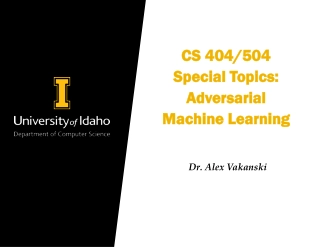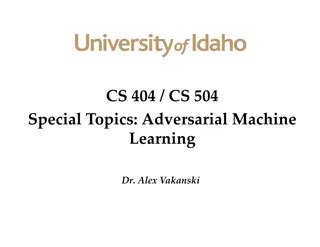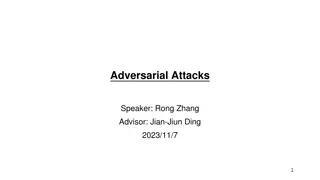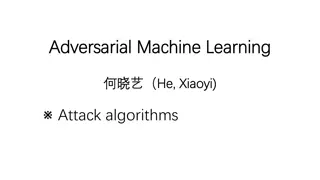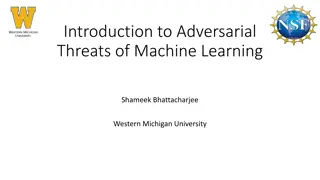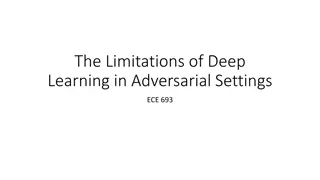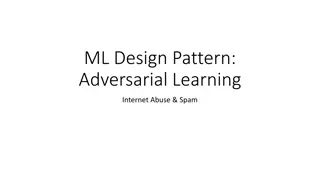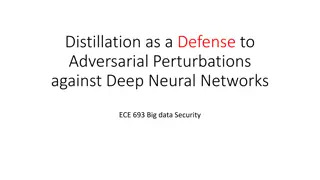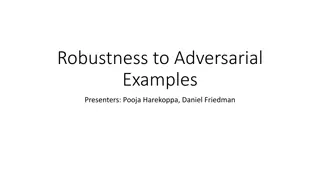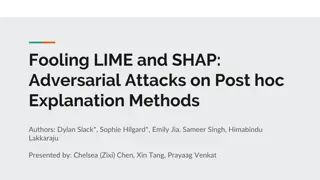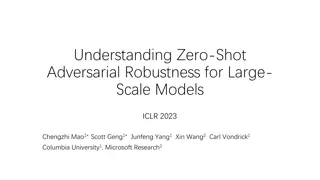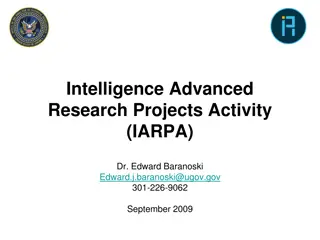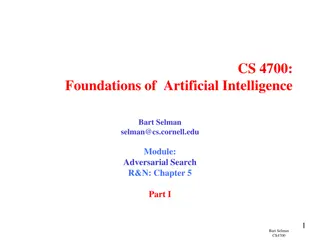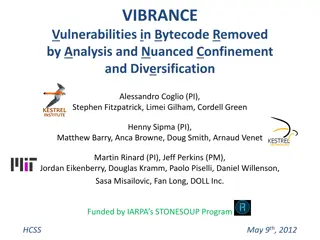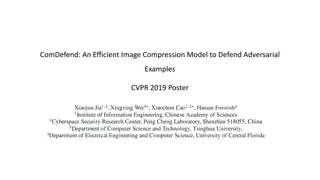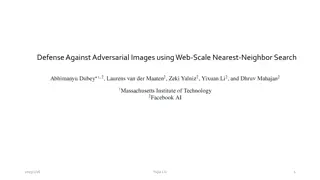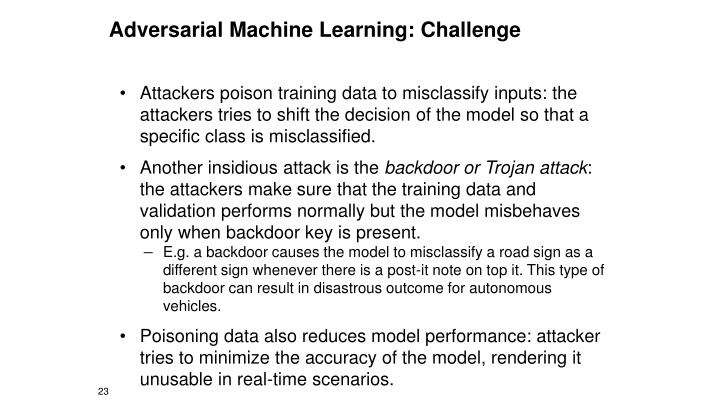
Mitigating Attacks in Machine Learning Models with Defensive Strategies
Explore the challenges of adversarial attacks in machine learning, such as poisoning and evasion attacks, and learn about offensive and defensive strategies to safeguard models against malicious manipulation. Discover how to identify and counteract adversarial inputs, protect against backdoor attacks, and ensure the integrity of training data for reliable model performance.
Download Presentation

Please find below an Image/Link to download the presentation.
The content on the website is provided AS IS for your information and personal use only. It may not be sold, licensed, or shared on other websites without obtaining consent from the author. If you encounter any issues during the download, it is possible that the publisher has removed the file from their server.
You are allowed to download the files provided on this website for personal or commercial use, subject to the condition that they are used lawfully. All files are the property of their respective owners.
The content on the website is provided AS IS for your information and personal use only. It may not be sold, licensed, or shared on other websites without obtaining consent from the author.
E N D
Presentation Transcript
Adversarial Machine Learning: Challenge Attackers poison training data to misclassify inputs: the attackers tries to shift the decision of the model so that a specific class is misclassified. Another insidious attack is the backdoor or Trojan attack: the attackers make sure that the training data and validation performs normally but the model misbehaves only when backdoor key is present. E.g. a backdoor causes the model to misclassify a road sign as a different sign whenever there is a post-it note on top it. This type of backdoor can result in disastrous outcome for autonomous vehicles. Poisoning data also reduces model performance: attacker tries to minimize the accuracy of the model, rendering it unusable in real-time scenarios. 23
Adversarial Machine Learning: Solution Overview We will generate offensive models to infiltrate training set and observe the progression of the attacks in various states of learning. We will design counter measures to isolate the poisonous data by using outlier detection algorithms and clustering. We will implement a fuzzy matching technique with knowledge base of training set manipulations to identify potential intrusions in training sets. We will define metrics to quantify trustworthiness of the data originating from trusted or untrusted system, verified or unverified data format, etc. 24
Poisoning & Evasion Attacks (Collaboration with Prof. Clifton) In poisoning attacks, attackers try to influence, learn, and corrupt the machine learning model through training data. In evasion attacks, the attacker does not tamper with the machine learning model but they produce adversary selected inputs for testing phase. 25
Poisoning & Evasion Attacks: Offensive Strategy In order to facilitate an effective defense against poisoning attacks, we will first implement an attack: optimize the data perturbation to the minimum to corrupt the machine learning model. Optimization-based poisoning attacks: We will characterize the attack strategy with bilevel optimization problem and we will solve it with iteratively optimizing one poisoning sample at a time through gradient ascent. With this, we will also implement Baseline Gradient Decent (BGD) attack where poisoning attack will take place in regression setting. 26
Poisoning & Evasion Attacks: Defensive Strategy We will employ k-Nearest Neighbors (kNN) algorithm to identify outliers in testing and training data. Cosine similarities from the testing/training samples to every single new training/testing samples are calculated. The k-nearest neighbor of the testing sample is selected, where k is an integer that can be determined through elbow method. The most frequent classes of these K neighbors is assigned to the test sample i.e., the testing sample is assigned to the class D if it is most frequently occurring label in k nearest training samples. 27
Behavior-based analytics is used to categorize adaptive cyber-attacks and poison attacks on ML We develop a methodology that uses contextual information about the origin and transformation of data points in the training set to identify poisonous data. This research considers both trusted test data set and partially trusted data set or untrusted data sets as needed in distributed learning models. While it is difficult to prevent adversaries from manipulating the environment around the source of information, IAS ensures that the provenance information is secured and cannot be tampered with and remains in an immutable storage system such as a blockchain, where the origin of data points cannot be faked. The detection service allows IAS to filter poisonous data with the help of provenance information. Poisoning attacks on ML will be removed by detection of outliers and unverifiable data from training and test datasets. Further, we will quantify the usability of the sampled data through regression model and customized F-score which will be used to filter the unwanted and adversarial data out. Using our past NGCRC research, collusive and Sybil attacks on ML are mitigated. 6
Poisoning & Evasion Attacks: Defensive Strategy for Partially Trusted Data When training data is obtained from untrusted sources (customer behavior profile and crowdsourced data), it may be prone to poisoning attacks. It is vital to detect when models have been poisoned or tampered with when they are trained by untrusted sources. Overview of the poisoning attacks detection 28 Image source: IBM Adversarial Machine Learning
Poisoning & Evasion Attacks: Defensive Strategy for Partially Trusted Data Segment the training data into several groups based on provenance data. The probability of poisoning is highly correlated in across samples in each group. Data points in each segment are evaluated by comparing the performance of the classifier trained with and without that group. Using Reject on Negative Impact (RONI), we evaluate the effect of individual data points on the performance of the final classifier. By using provenance data, our method can properly group data points together and compute their cumulative effect on the classifier. It increases detection rates and reduces computational costs. 29
Experiment: Poisoning & Evasion Attacks Objective: Create an offensive mechanism to efficiently poison training data and design a defensive mechanism for detecting poisoning and evasion attacks. Input: Featured datasets (datasets that are already categorized with features) with training and testing samples. Output: Percentage of poisonous samples required to poison training data, accuracy of techniques in detecting poisonous and evasion attacks. Experimental Setup: Data collection kernel drivers for windows and LiME for Linux to collect benign and malicious samples. 30

